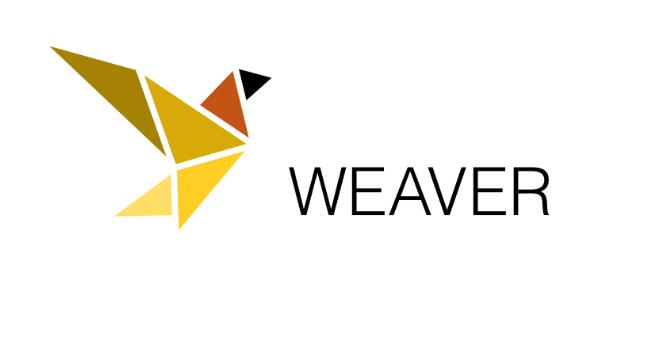Weaver
Declarative, easy-to-use and safe Dependency Injection framework for Swift (iOS/macOS/Linux)
Features
- [x] Dependency declaration via annotations (no config file needed)
- [x] DI Containers auto-generation
- [x] Dependency Graph compile time validation
- [x] ObjC support
- [x] Non-optional dependency resolution
- [x] Type safety
- [x] Injection with arguments
- [x] Registration Scopes
- [x] DI Container hierarchy
Dependency Injection
Dependency Injection basically means "giving an object its instance variables" . It seems like it's not such a big deal, but as soon as a project gets bigger, it gets tricky. Initializers become too complex, passing down dependencies through several layers becomes time consuming and just figuring out where to get a dependency from can be hard enough to give up and finally use a singleton.
However, Dependency Injection is a fundamental aspect of software architecture, and there is no good reason not to do it properly. That's where Weaver can help.
What is Weaver?
Weaver is a declarative, easy-to-use and safe Dependency Injection framework for Swift.
- Declarative because it allows developers to declare dependencies via annotations directly in the Swift code.
- Easy-to-use because it generates the necessary boilerplate code to inject dependencies into Swift types.
- Safe because it validates the dependency graph at compile time and outputs a nice Xcode error when something's wrong.
How does Weaver work?
Even though Weaver makes dependency injection work out of the box, it's important to know what it does under the hood. There are two phases to be aware of; compile time and run time.
At compile time
|-> link() -> dependency graph -> validate() -> valid/invalid
swift files -> scan() -> [Token] -> parse() -> AST -|
|-> generate() -> source code
Weaver's command line tool scans the Swift sources of the project, looking for annotations, and generates an AST (abstract syntax tree). It uses SourceKitten which is backed by Apple's SourceKit, making this step pretty reliable.
This AST is then used to generate a dependency graph on which a bunch of safety checks are peformed in order to make sure the code won't crash at run time. It checks for unresolvable dependencies and unsolvable cyclic dependencies. If any issue is found, no code is being generated, which means that the project will fail to compile.
The same AST is also used to generate the boilerplate code. It generates one dependency container per class/struct with injectable dependencies. It also generates a bunch of extensions and protocols in order to make the dependency injection almost transparent for the developer.
At run time
Weaver implements a lightweight DI Container object which is able to register and resolve dependencies based on their scope, protocol or concrete type, name and parameters. Each container can have a parent, allowing to resolve dependencies throughout a hierarchy of containers.
When an object registers a dependency, its associated DI Container stores a builder (and sometimes an instance). When another object declares a reference to this same dependency, its associated DI Container declares an accessor, which tries to resolve the dependency. Resolving a dependency basically means to look for a builder/instance while backtracking the hierarchy of containers. If no dependency is found or if this process gets trapped into an infinite recursion, it will crash at runtime, which is why checking the dependency graph at compile time is extremely important.
Installation
Weaver comes in 3 parts:
- A Swift framework to include into your project
- A command line tool to install on your machine
- A build phase to add to your project
(1) - Weaver framework installation
Weaver's Swift framework is available with CocoaPods, Carthage and Swift Package Manager.
CocoaPods
Add pod 'Weaver', :git => '[email protected]:scribd/Weaver.git', :tag => '0.9.2' to the Podfile.
Carthage
Add github "scribd/Weaver" ~> 0.9.2 to the Cartfile.
SwiftPM
Add .package(url: "https://github.com/scribd/Weaver.git", from: "0.9.2") to the dependencies section of the Package.swift file.
(2) - Weaver command line tool installation
The Weaver command line tool can be installed using Homebrew or manually.
Binary form
Download the latest release with the prebuilt binary from release tab. Unzip the archive into the desired destination and run bin/weaver
Homebrew (coming soon)
brew install Weaver
Building from source
Download the latest release source code from the release tab or clone the repository.
In the project directory, run brew update && brew bundle && make install to build and install the command line tool.
Check installation
Run the following to check if Weaver has been installed correctly.
$ weaver --help
Usage:
$ weaver <input_paths>
Arguments:
input_paths - Swift files to parse.
Options:
--output_path [default: .] - Where the swift files will be generated.
--template_path - Custom template path.
--unsafe [default: false]
(3) - Weaver build phase
In Xcode, add the following command to a command line build phase:
weaver --output_path ${SOURCE_ROOT}/output/path `find ${SOURCE_ROOT}/Sample -name '*.swift' | xargs`
Important - Move this build phase above the Compile Source phase so Weaver can generate the boilerplate code before compilation happens.
Warning - Using --unsafe is not recommended. It will deactivate the graph validation, meaning the generated code could crash if the dependency graph is invalid. Only set it to false if the graph validation prevents the project from compiling even though it should not. If you find yourself in that situation, please, feel free to file a bug.
Basic Usage
For a more complete usage example, please check out the sample project.
Let's implement a very basic app displaying a list of movies. It will be composed of three noticeable objects:
AppDelegatewhere the dependencies are registered.MovieManagerproviding the movies.MoviesViewControllershowing a list of movies at the screen.
Let's get into the code.
AppDelegate:
import UIKit
import Weaver
@UIApplicationMain
class AppDelegate: UIResponder, UIApplicationDelegate {
var window: UIWindow?
private let dependencies = AppDelegateDependencyContainer()
// weaver: movieManager = MovieManager <- MovieManaging
// weaver: movieManager.scope = .container
// weaver: moviesViewController = MoviesViewController <- UIViewController
// weaver: moviesViewController.scope = .container
func application(_ application: UIApplication, didFinishLaunchingWithOptions launchOptions: [UIApplicationLaunchOptionsKey: Any]?) -> Bool {
window = UIWindow()
let rootViewController = dependencies.moviesViewController
window?.rootViewController = UINavigationController(rootViewController: rootViewController)
window?.makeKeyAndVisible()
return true
}
}
AppDelegate registers two dependencies:
// weaver: movieManager = MovieManager <- MovieManaging// weaver: moviesViewController = MoviesViewController <- UIViewController
These dependencies are made accessible to any object built from AppDelegate because their scope is set to container:
// weaver: movieManager.scope = .container// weaver: moviesViewController.scope = .container
A dependency registration automatically generates the registration code and one accessor in AppDelegateDependencyContainer, which is why the rootViewController can be built:
let rootViewController = dependencies.moviesViewController.
MovieManager:
protocol MovieManaging {
func getMovies(_ completion: @escaping (Result<Page<Movie>, MovieManagerError>) -> Void)
}
final class MovieManager: MovieManaging {
func getMovies(_ completion: @escaping (Result<Page<Movie>, MovieManagerError>) -> Void) {
// fetches movies from the server...
completion(.success(movies))
}
}
MoviesViewController:
final class MoviesViewController: UIViewController {
private let dependencies: MoviesViewControllerDependencyResolver
private var movies = [Movie]()
// weaver: movieManager <- MovieManaging
required init(injecting dependencies: MoviesViewControllerDependencyResolver) {
self.dependencies = dependencies
super.init(nibName: nil, bundle: nil)
}
override func viewDidLoad() {
super.viewDidLoad()
// Setups the tableview...
// Fetches the movies
dependencies.movieManager.getMovies { result in
switch result {
case .success(let page):
self.movies = page.results
self.tableView.reloadData()
case .failure(let error):
self.showError(error)
}
}
}
// ...
}
MoviesViewController declares a dependency reference:
// weaver: movieManager <- MovieManaging
This annotation generates an accessor in MoviesViewControllerDependencyResolver, but no registration, which means MovieManager is not stored in MoviesViewControllerDependencyContainer, but in its parent (the container from which it was built). In this case, AppDelegateDependencyContainer.
MoviesViewController also needs to declare a specific initializer:
required init(injecting dependencies: MoviesViewControllerDependencyResolver)
This initializer is used to inject the DI Container. Note that MoviesViewControllerDependencyResolver is a protocol, which means a fake version of the DI Container can be injected when testing.
API
Code Annotations
Weaver allows you to declare dependencies by annotating the code with comments like so // weaver: ....
It currently supports the following annotations:
- Dependency Registration Annotation
- Adds the dependency builder to the container.
- Adds an accessor for the dependency to the container's resolver protocol.
Example:
// weaver: dependencyName = DependencyConcreteType <- DependencyProtocol
or
// weaver: dependencyName = DependencyConcreteType
dependencyName: Dependency's name. Used to make reference to the dependency in other objects and/or annotations.DependencyConcreteType: Dependency's implementation type. Can be astructor aclass.DependencyProtocol: Dependency'sprotocolif any. Optional, you can register a dependency with its concrete type only.
- Scope Annotation
Sets the scope of a dependency. The default scope being graph. Only works along with a registration annotation.
The scope defines a dependency's access level and caching strategy. Four scopes are available:
transient: Always creates a new instance when resolved. Can't be accessed from children.graph: A new instance is created when resolved the first time and then lives for the time the container lives. Can't be accessed from children.weak: A new instance is created when resolved the first time and then lives for the time its strong references are living. Accessible from children.container: Like graph, but accessible from children.
Example:
// weaver: dependencyName.scope = .scopeValue
scopeValue: Value of the scope. It can be one of the values described above.
- Dependency Reference Annotation
Adds an accessor for the dependency to the container's protocol.
Example:
// weaver: dependencyName <- DependencyType
DependencyType: Either the concrete or abstract type of the dependency. This also defines the type the dependency's accessor returns.
- Custom Reference Annotation
Adds the method dependencyNameCustomRef(_ dependencyContainer:) to the container's resolver protocol. The default value being false. This method is left unimplemented by Weaver, meaning you'll need to implement it yourself and resolve/build the dependency manually.
Works along with registration and reference annotations.
Warning - Make sure you don't do anything unsafe with the dependencyContainer parameter passed down in this method since it won't be caught by the dependency graph validator.
Example:
// weaver: dependencyName.customRef = aBoolean
aBoolean: Boolean definining if the dependency should have a custom reference or not. Can take the value true or false.
- Parameter Annotation
Adds a parameter to the container's resolver protocol. This means that the generated container needs to take these parameter at initialisation. It also means that all the concerned dependency accessors need to take this parameter.
Example:
// weaver: parameterName <= ParameterType
- Configuration Annotation
Sets a configuration attribute to the concerned object.
Example:
// weaver: self.attributeName = aValue
Configuration Attributes:
isIsolated: Bool(default:false): any object setting this to true is considered by Weaver as an object which isn't used in the project. An object flagged as isolated can only have isolated dependents. This attribute is useful to develop a feature wihout all the dependencies setup in the project.


